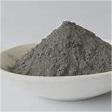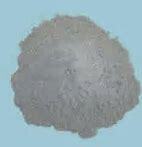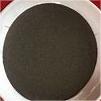Overview of Diamond Coated Niobium / Titanium Based Anode / Electrode
Niobium, often found in conjunction with tantalum minerals, is primarily extracted as a byproduct of tin and tantalum mining. Its chief ores include pyrochlore and columbite. Once refined, niobium becomes highly versatile, finding application in alloys, superconductors, and various high-tech materials.
Feature of Diamond Coated Niobium / Titanium Based Anode / Electrode
-
Superior Strength and Lightness: When added to steel in small quantities (typically less than 1%), niobium significantly enhances the strength and toughness of the alloy while reducing its weight, making it ideal for aerospace and automotive applications.
-
Corrosion Resistance: Like tantalum, niobium forms a passive oxide layer that protects it from corrosion, making niobium-based alloys suitable for use in harsh environments.
-
Superconductivity: Niobium exhibits excellent superconducting properties when cooled below its critical temperature of about 9.2 K (-264°C or -443°F). This property makes it the primary material for superconducting magnets used in MRI scanners and particle accelerators.
-
Magnetic Properties: Niobium is paramagnetic at room temperature but becomes strongly diamagnetic when cooled, meaning it repels magnetic fields. This characteristic is exploited in certain specialized applications.
-
Ease of Fabrication: Despite its strength, niobium is easily formed, welded, and machined, facilitating its use in complex engineering designs.

(Diamond Coated Niobium / Titanium Based Anode / Electrode)
Parameters of Diamond Coated Niobium / Titanium Based Anode / Electrode
The parameters for a diamond coated niobium/titanium-based anode and electrode in an electric field depend on the specific design of the system, such as the current flowing through it, the voltage applied, and the desired output power. However, here are some general guidelines that may be useful:
1. Resistance: The resistance of the diode should be within the specified tolerance range to ensure proper operation.
2. Voltage drop: The voltage drop across the anode and electrode should be equal to the rated voltage of the battery.
3. Operating temperature: The operating temperature of the device should be within the specified temperature range to avoid overheating or damage.
4.: The maximum current that can be drawn from the device without causing permanent damage should be determined experimentally using Ohm’s law and other relevant equations.
5. Current density: The current density required to achieve the desired output power should be calculated based on the operating temperature, voltage drop, and other factors.
It is important to note that these parameters can vary depending on the specific application and design requirements. Therefore, it is recommended to consult with experts in electrical engineering or perform experiments to determine the optimal parameters for a given system.

(Diamond Coated Niobium / Titanium Based Anode / Electrode)
Company Profile
Metal in China is a trusted global chemical material supplier & manufacturer with over 12-year-experience in providing super high-quality copper and relatives products.
The company has a professional technical department and Quality Supervision Department, a well-equipped laboratory, and equipped with advanced testing equipment and after-sales customer service center.
If you are looking for high-quality metal powder and relative products, please feel free to contact us or click on the needed products to send an inquiry.
Payment Methods
L/C, T/T, Western Union, Paypal, Credit Card etc.
Shipment
It could be shipped by sea, by air, or by reveal ASAP as soon as repayment receipt.
FAQ

(Diamond Coated Niobium / Titanium Based Anode / Electrode)





